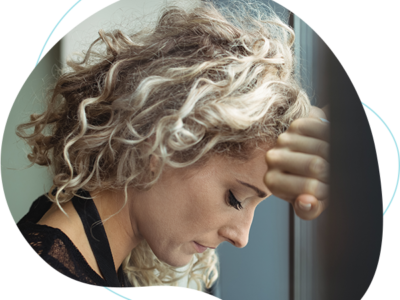
Introduction
Itchy skin can be more than just an annoyance; it can disrupt daily life and affect overall well-being. Whether caused by environmental factors, allergies, or skin conditions, finding the right cream for itchy skin is essential for comfort and health. This in-depth guide covers the causes of itchy skin, types of creams, key ingredients, application tips, and natural alternatives. We aim to equip you with the knowledge to make an informed choice for effective relief.
1. Understanding Itchy Skin
1.1 What Causes Itchy Skin?
Itchy skin, or pruritus, is a common condition that can result from various factors:
- Allergies: Allergic reactions to foods, medications, or environmental factors like pollen or pet dander can cause itching. Allergies often trigger a release of histamines, which can cause the skin to itch.
- Dry Skin: Environmental conditions such as low humidity, cold weather, or frequent washing can strip the skin of its natural oils, leading to dryness and itchiness.
- Eczema: Also known as atopic dermatitis, eczema is a chronic condition characterized by inflamed, itchy patches of skin.
- Psoriasis: An autoimmune disorder that speeds up the life cycle of skin cells, leading to scaly, itchy patches.
- Infections: Fungal infections (like athlete’s foot), bacterial infections (such as impetigo), or viral infections (like shingles) can cause localized or widespread itching.
1.2 Common Symptoms of Itchy Skin
Itchy skin can present with various symptoms, including:
- Persistent Itching: An uncontrollable urge to scratch or rub the affected area.
- Redness or Inflammation: Areas may appear red or swollen due to irritation or inflammation.
- Dry or Scaly Patches: Skin may become rough, flaky, or scaly.
- Rashes or Bumps: Itching may be accompanied by rashes, hives, or small bumps.
2. Types of Creams for Itchy Skin
2.1 Moisturizing Creams
Moisturizing creams are crucial for managing dry skin and preventing itchiness. These creams work by:
- Hydrating the Skin: They contain ingredients that attract and retain moisture, helping to keep the skin hydrated and soft.
- Creating a Barrier: They form a protective layer on the skin, which helps to shield it from irritants and allergens.
Key Ingredients in Moisturizing Creams
- Petroleum jelly: is a type of humectant that helps the skin retain moisture.
- Hyaluronic Acid: A powerful hydrator that holds water in the skin, improving elasticity and texture.
- Ceramides: are lipid molecules that support moisture retention and skin barrier restoration.
2.2 Corticosteroid Creams
Corticosteroid creams are used to manage more severe itching, often caused by inflammatory conditions like eczema or psoriasis. They work by:
- Reducing Inflammation: Corticosteroids decrease the production of inflammatory chemicals in the body, which helps to reduce redness and swelling.
- Relieving Itching: By reducing inflammation, these creams also help to alleviate the itching associated with various skin conditions.
Types of Corticosteroid Creams
- Low-Potency: Used for mild conditions or sensitive areas.
- Medium-Potency: Suitable for moderate inflammation and itching.
- High-Potency: Reserved for severe cases and should be used under medical supervision.
2.3 Antihistamine Creams
Antihistamine creams are effective for itchiness caused by allergic reactions. They work by:
- Blocking Histamines: Histamines are chemicals released during allergic reactions that cause itching. Antihistamine creams prevent these chemicals from binding to receptors in the skin, thus reducing itching.
Common Antihistamine Ingredients
- Diphenhydramine: A common antihistamine used in topical creams to relieve itching from allergies or insect bites.
- Hydroxyzine: Another antihistamine that can be used topically or orally for more severe allergic reactions.
2.4 Anti-Fungal and Anti-Bacterial Creams
For itchiness related to infections, anti-fungal and anti-bacterial creams are necessary. They work by:
- Eliminating Pathogens: These creams contain active ingredients that target and kill the fungi or bacteria causing the infection.
Common Ingredients
- Clotrimazole: Effective against fungal infections like athlete’s foot and ringworm.
- Benzoyl Peroxide: Often used for bacterial infections like acne.
3. Key Ingredients to Look For
3.1 Hydrating Agents
Hydrating agents are essential for relieving dry, itchy skin. Look for:
- Glycerin: Aids in attracting moisture to the skin from the surrounding air.
- Hyaluronic Acid: This ingredient plumps and deeply hydrates the skin.
- Urea: A keratolytic agent that helps to exfoliate and hydrate dry, rough skin.
3.2 Anti-Inflammatory Agents
To reduce inflammation and itching:
- Hydrocortisone: A low-potency corticosteroid that can be used for short-term relief of inflammation and itching.
- Aloe Vera: Contains compounds that soothe and cool the skin, reducing inflammation and irritation.
- Colloidal oat meal: Provides a protective skin barrier and has anti-inflammatory qualities.
3.3 Antihistamines
To combat allergic reactions:
- Diphenhydramine: Blocks histamine receptors, reducing itching.
- Loratadine: A non-sedating antihistamine that can also be used for chronic itch relief.
3.4 Antiseptics and Antifungals
To address infections:
- Clotrimazole: An anti-fungal agent that helps treat athlete’s foot and ringworm.
- Neomycin: An antibiotic used in combination with other ingredients to prevent bacterial infections in wounds.
4. Choosing the Right Cream for Your Needs
4.1 Identify the Cause of Itchiness
Understanding the underlying cause of your itchiness is crucial in choosing the right cream:
- Allergic Reactions: Opt for antihistamine creams.
- Dry Skin: Go for moisturizing creams.
- Inflammatory Conditions: Use corticosteroid creams as needed.
4.2 Consider Your Skin Type
Different skin types require different products:
- Dry Skin: Rich, emollient creams that provide deep hydration are best.
- Oily or Acne-Prone Skin: Light, non-comedogenic formulas that won’t clog pores.
4.3 Consult a Dermatologist
If over-the-counter options are not effective or if you have a chronic condition, consulting a dermatologist is important. They can prescribe specialized treatments and provide personalized advice based on your specific needs.
5. Application Tips
5.1 How to Apply Cream Effectively
- Cleanse the Area: Gently wash the affected area with mild soap and water. Pat dry with a clean towel.
- Apply Sparingly: Use a small amount of cream to avoid over-application, which can lead to side effects.
- Massage Gently: Rub the cream in gently until fully absorbed, avoiding excessive friction.
5.2 Frequency of Application
- Follow Instructions: Adhere to the specific guidelines provided with the cream, whether it’s daily or as needed.
- Avoid Overuse: Excessive use of certain creams, especially corticosteroids, can lead to adverse effects such as skin thinning or resistance.
6. Potential Side Effects
6.1 Common Reactions
- Redness or Irritation: Some creams, particularly those with strong active ingredients, may cause initial irritation or redness.
- Allergic Reactions: Symptoms may include swelling, hives, or a rash. In the event that any severe reactions arise, stop using.
6.2 Long-Term Effects
- Thinning Skin: Extended corticosteroid use may cause the skin to thin.
- Resistance: Overuse of antifungal creams can lead to resistance, making the treatment less effective.
- Striae (Stretch Marks): Long-term use of potent corticosteroids can cause stretch marks.
7. Natural Alternatives
7.1 Aloe Vera Gel
Aloe vera is a soothing, natural remedy with anti-inflammatory and moisturizing properties. It can be applied directly from the plant or used in commercial formulations.
7.2 Oatmeal Baths
Colloidal oatmeal is known for its soothing properties. Adding it to a bath can help relieve itching and hydrate the skin.
7.3 Coconut Oil
Natural moisturizers like coconut oil have anti-inflammatory qualities. It helps to hydrate the skin and can be used as a base for other treatments.
Conclusion
Finding the right cream for itchy skin can significantly enhance your comfort and quality of life. By understanding the various types of creams, key ingredients, and application tips, you can make informed choices tailored to your specific needs. Always consult with a dermatologist if you’re unsure which treatment is best for you. Remember, the right cream for itchy skin can make all the difference in soothing your itchy skin and restoring your skin’s health.










